January 9, 2020
Garden Diet for Bees, Butterflies & Other Friends
February is that betwixt and between month. I’m already counting down the weeks, since that means my native Mexican plum (Prunus mexicana) buds into frothy white clusters signaling hundreds of bees and butterflies, including Red Admiral.
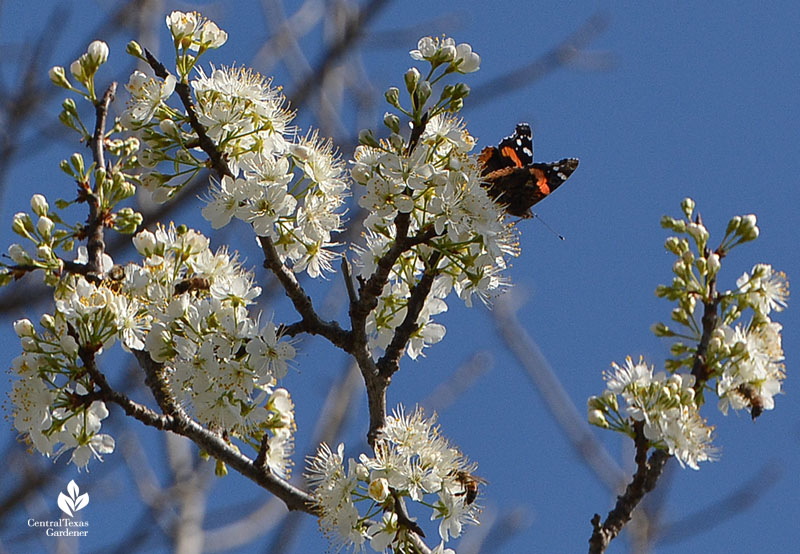
Growing to about 20-25’, it’s perfect for smaller yards. It’s not too late to plant one of your own, though they do take a few years to flower.
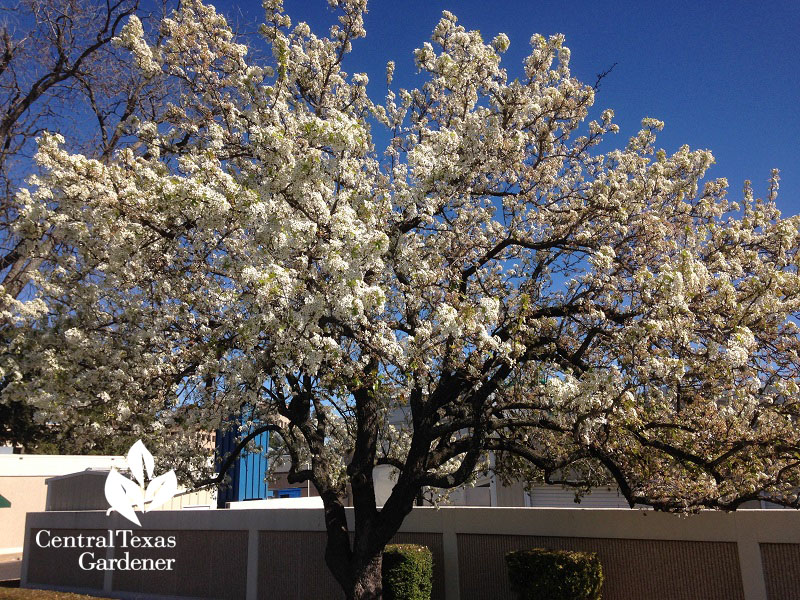
Not all flowers attract both bees and butterflies, but the National Butterfly Center in Mission has documented many that do, thanks to a native bee research project conducted by distinguished photojournalists Paula Sharp and Ross Eatman. Check out the spectacular 50+ native bee species they documented.
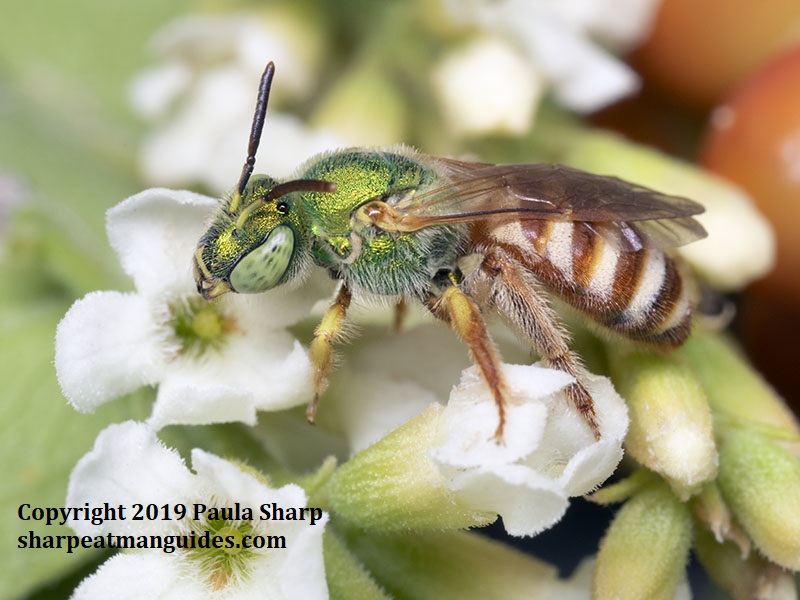
This week, John Hart Asher joins National Butterfly Center Executive Director Marianna T. Wright and Nursery Manager Stephanie Lopez to hone in on some of the plants that fulfill all a bee’s needs.
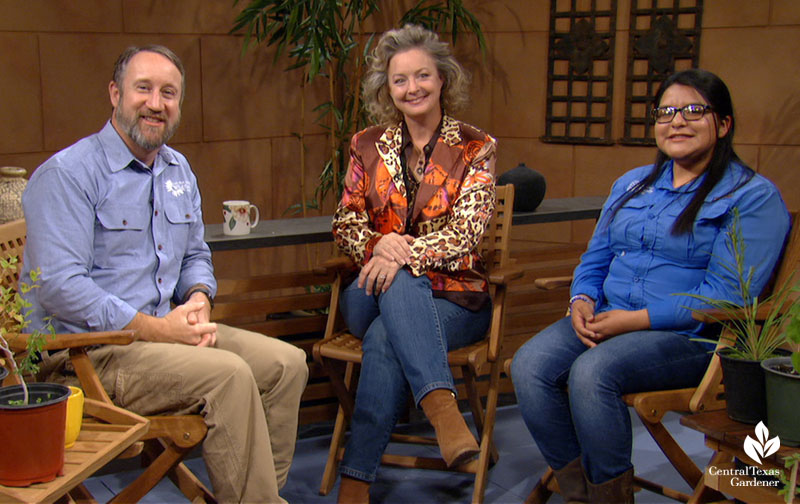
From spring through fall, shrubby tree Barbados cherry (Malpighia glabra) flowers for bees and butterflies, while fruits feed birds and mammals.
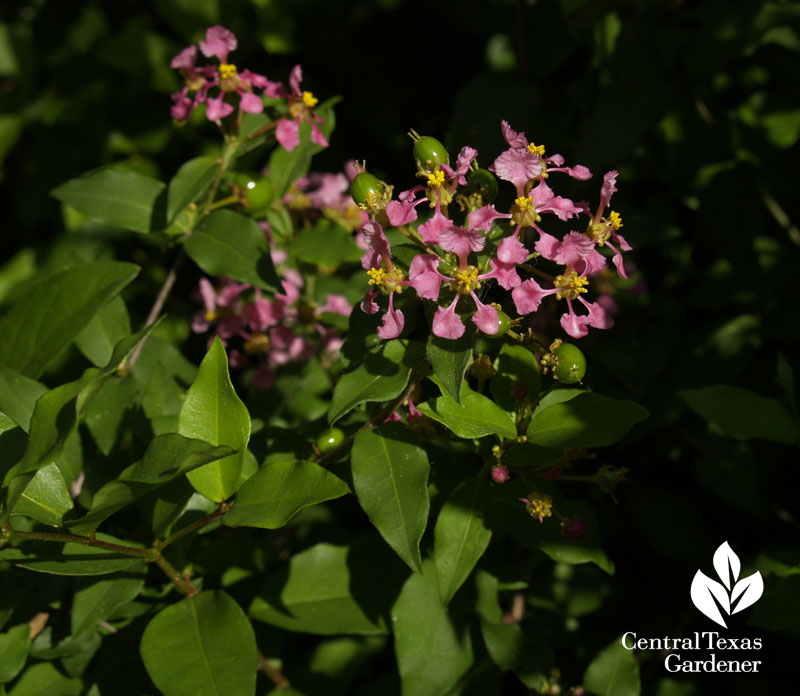
Perennial esperanza (Tecoma stans) loves grueling summer weather.
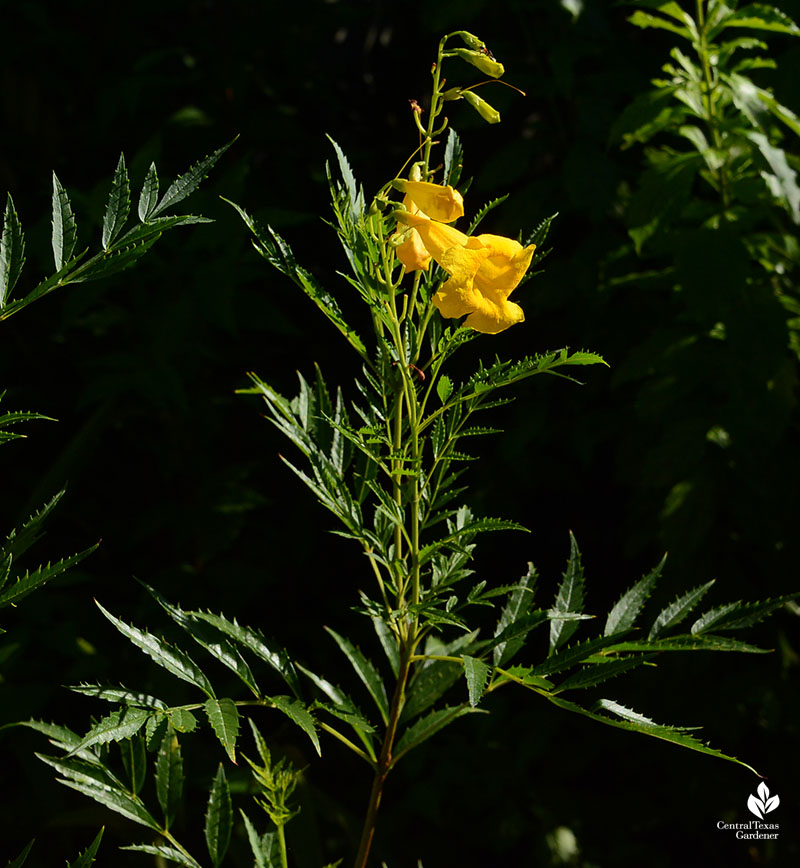
Bees and butterflies feast on fall’s various goldenrods.
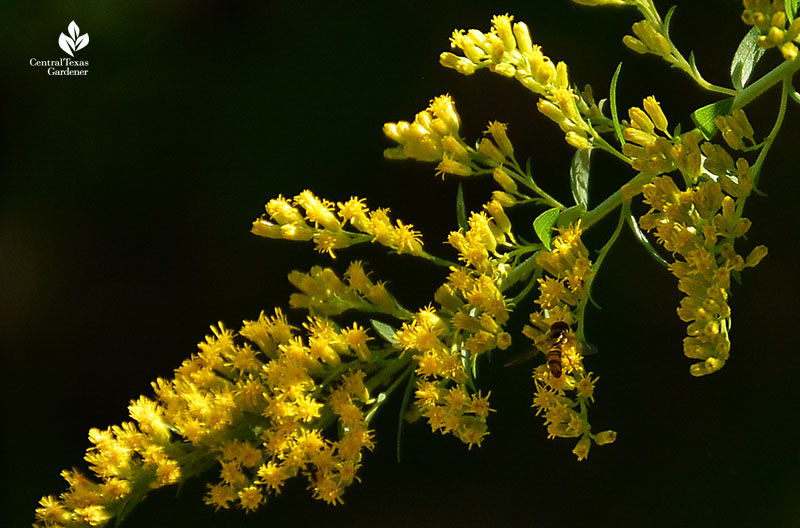
Watch now for all their ideas and fun facts!
The National Butterfly Center, a 100-acre wildlife center and native species botanical garden, invites you to their Wild Gardening Festival April 18- 21 for fun and #goodhabitatforming ideas!
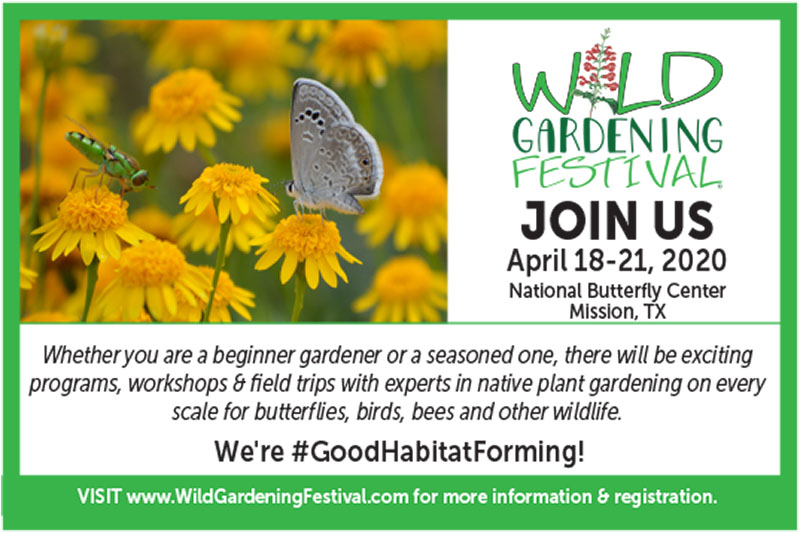
Shady perennial native frostweed (Verbesina virginica) attracts bees and butterflies to late summer and fall’s tiny white flowers.
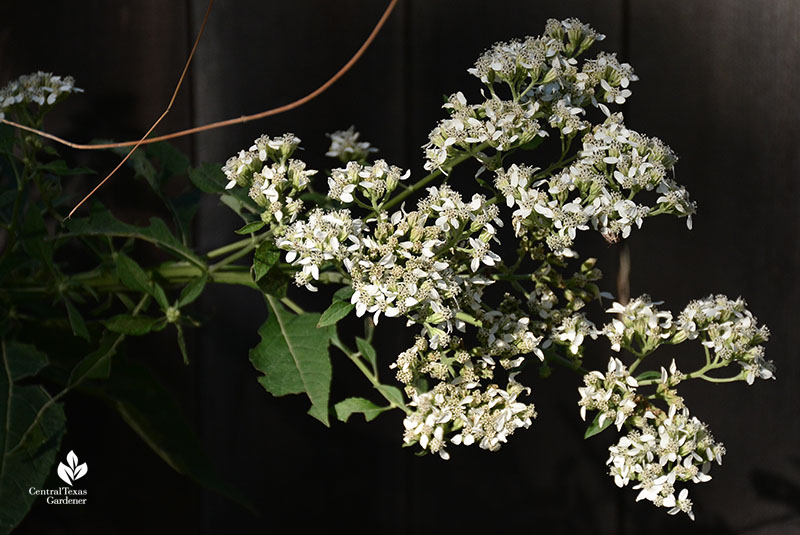
Despite its robust leaves, it can fade into the background until we get a freeze, like we did on November 13. Many viewers sent in pictures of its ice capades, including Master Gardeners Leah and Steve Baker. Watch now for Daphne’s details and to see all our viewer pictures.
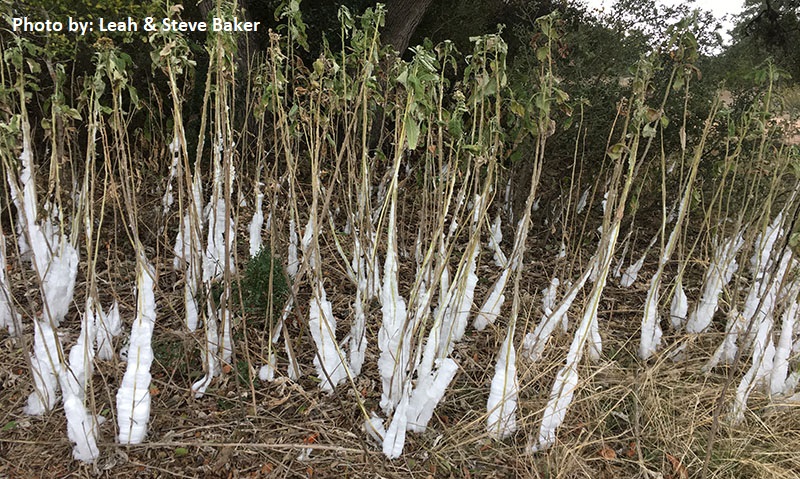
Next, what causes foliar variegation? To explain the drama, John joins Neil Schmidt, Education Coordinator at The Natural Gardener, to excite your indoor garden or highlight it outdoors. Watch now!
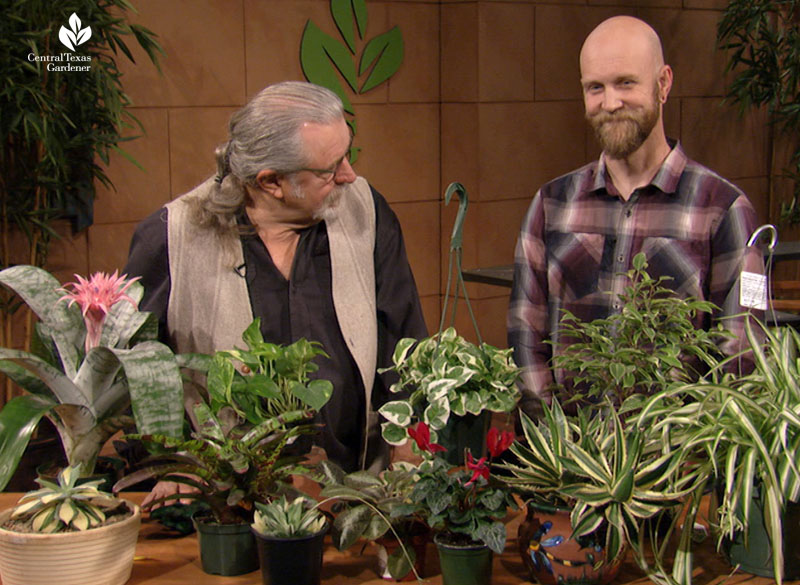
On tour in Leander, Betty Saenz responded to drought and loss of wildlife habitat with a water-conserving garden that’s as pretty as it is beneficial.
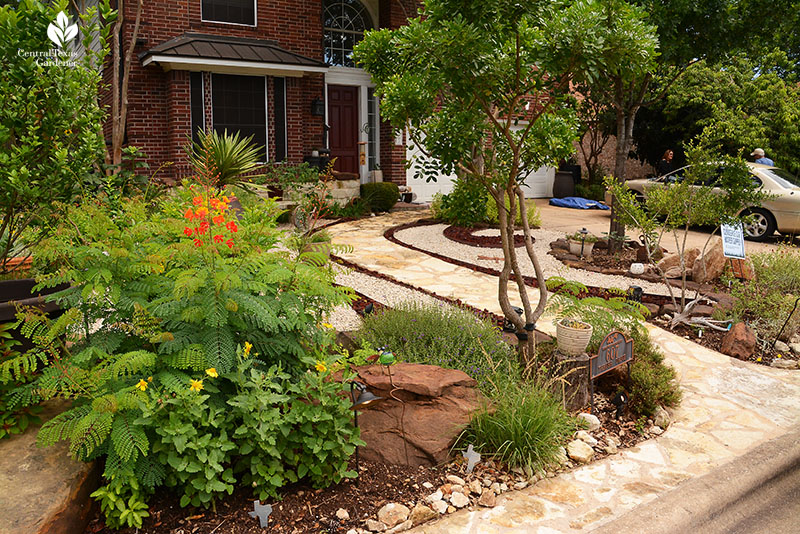
It was merely lawn in 2005 when Betty bought the house. Now, charming outdoor living areas invite gathering under the historic oak tree. Thanks to her mostly native plants along the part-shade fence borders, she’s always got a crowd of beneficial wildlife, too.
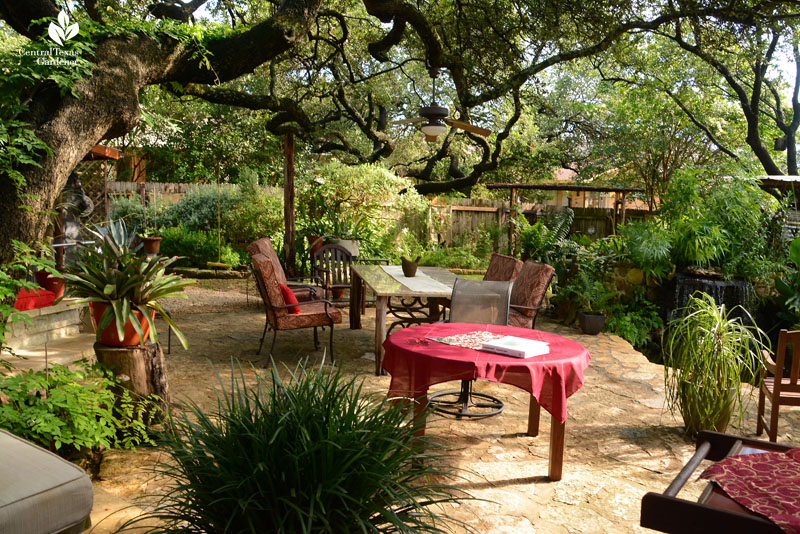
Her first big project was to build a small backyard pond with her son and Austin Pond Society members Ed Hendrickson and Bill Brister.
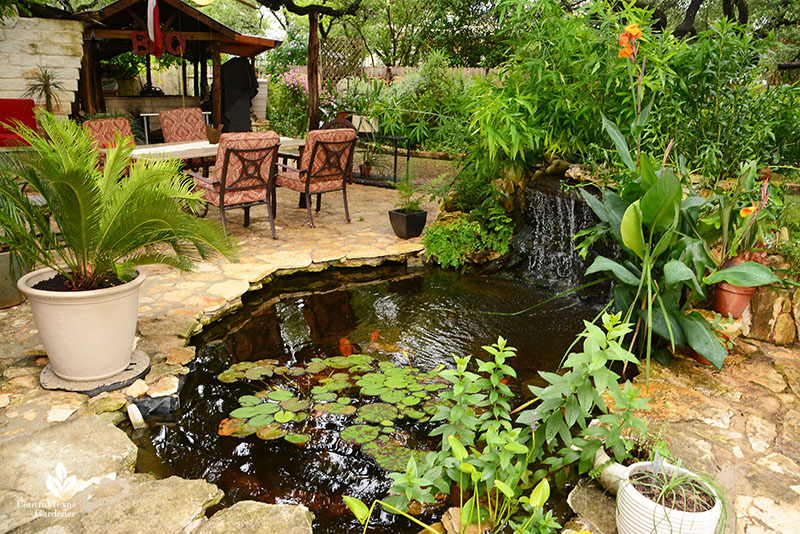
Instantly, wildlife of all kinds headed over.
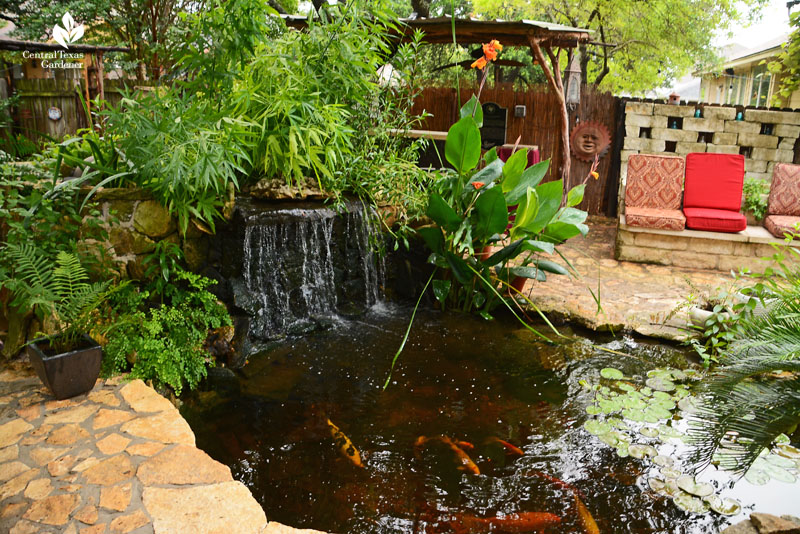
Then, she replaced lawn with flagstone for a broad patio. Its adjoining barbeque hut ensures that sudden downpours don’t dampen husband Rafael Saenz III’s culinary masterpieces.
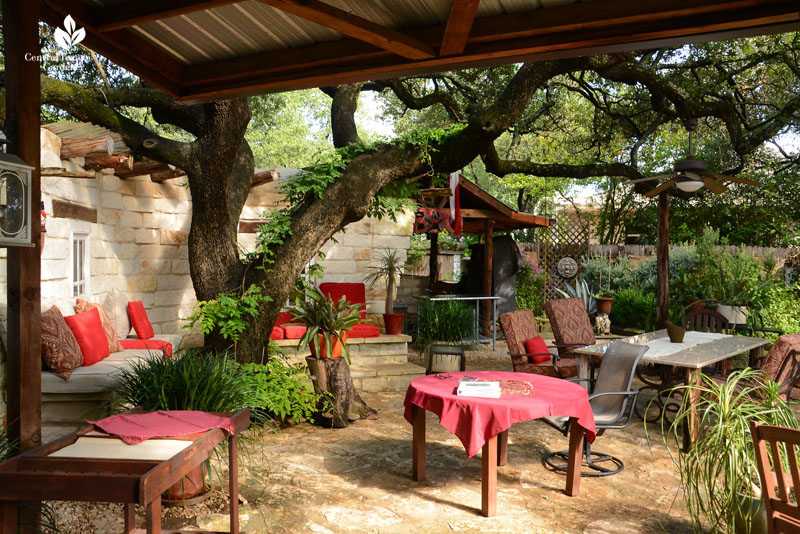
They gather round a dining table built with remnant granite and sturdy cedar posts. Beyond, benches along the Alamo-styled limestone greenhouse offer more cushioned seating.
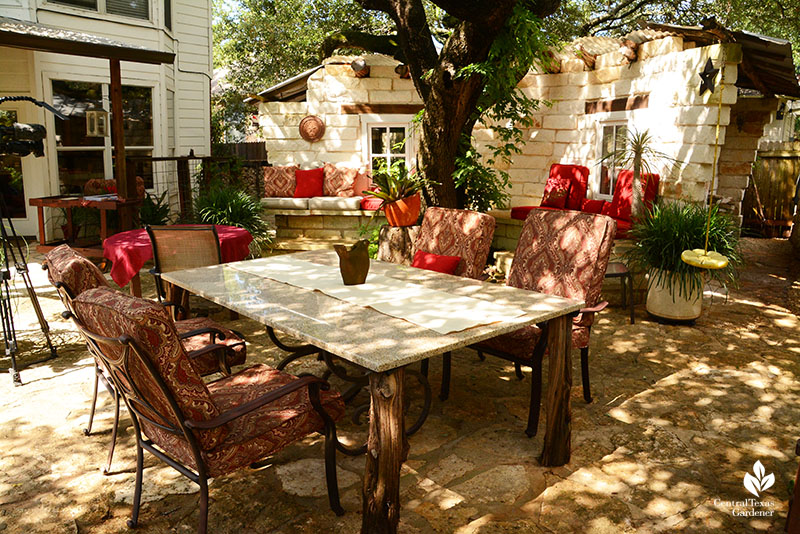
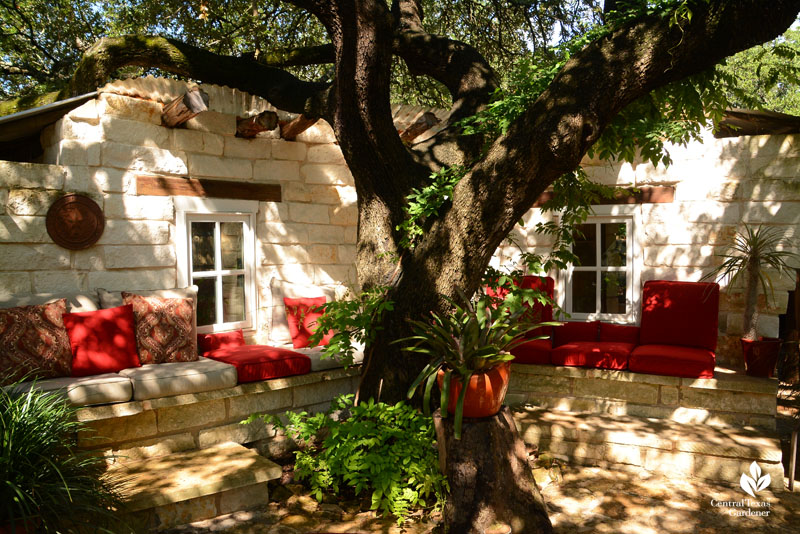
It’s a storage spot, winter greenhouse, and “she shed.” Its knotty alder sliding doors slide open to reveal a bright nook, lit with recycled windows and clear polycarbonate roofing panels attached to mountain cedar beams.
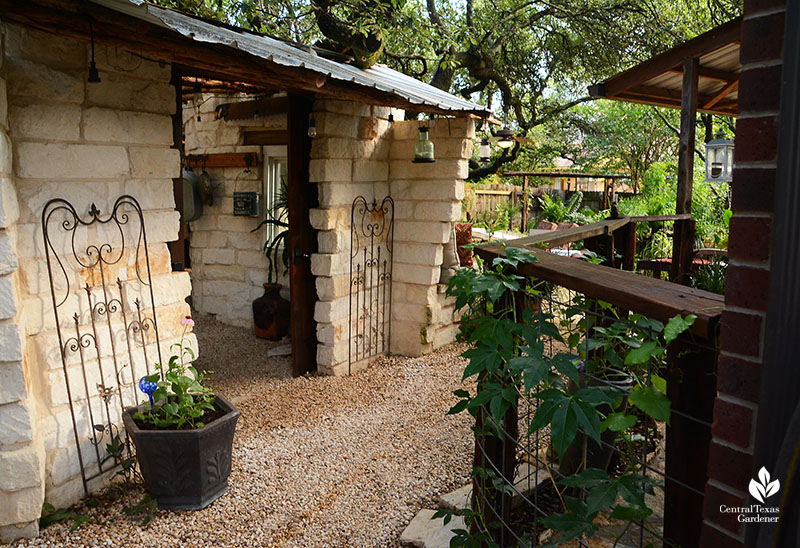
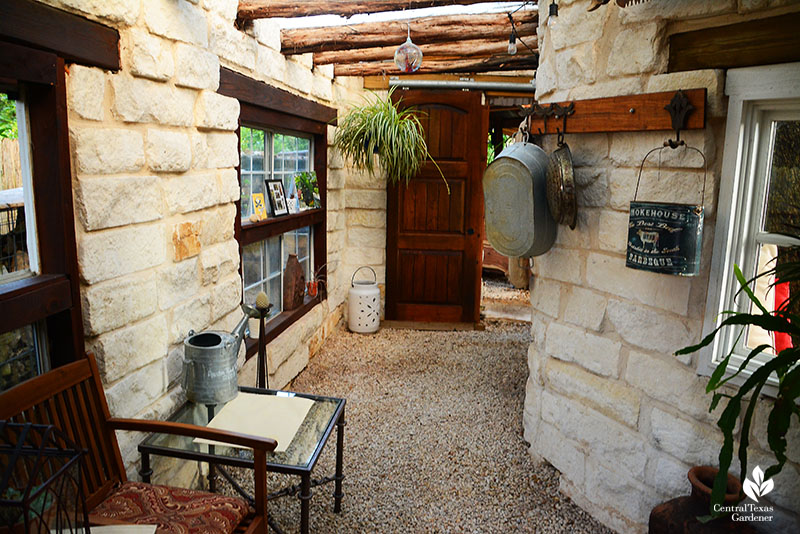
One of the first projects with her son was another comfortably rustic cabana hangout, its bar crafted from a Mexican blanket chest.
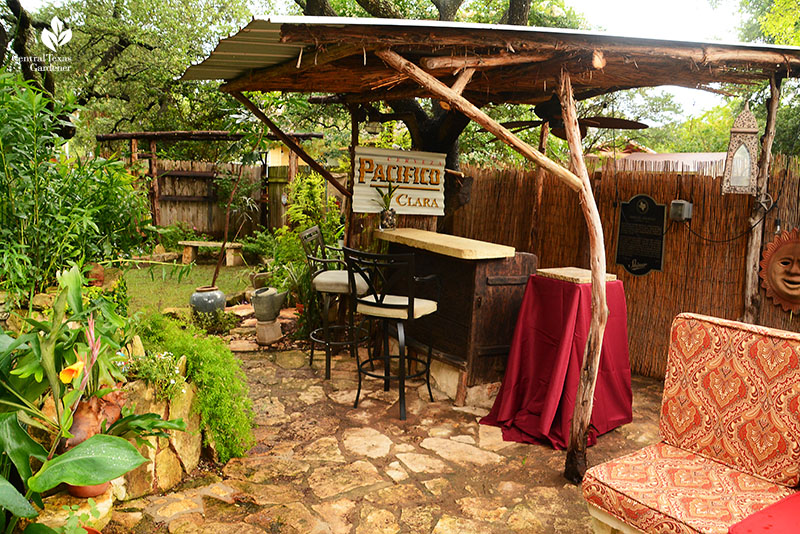
Nearby, one of Betty’s three wicking beds conserves water for edible crops. Its built-in bench offers more seating or relaxed clipping of fresh herbs for the kitchen.
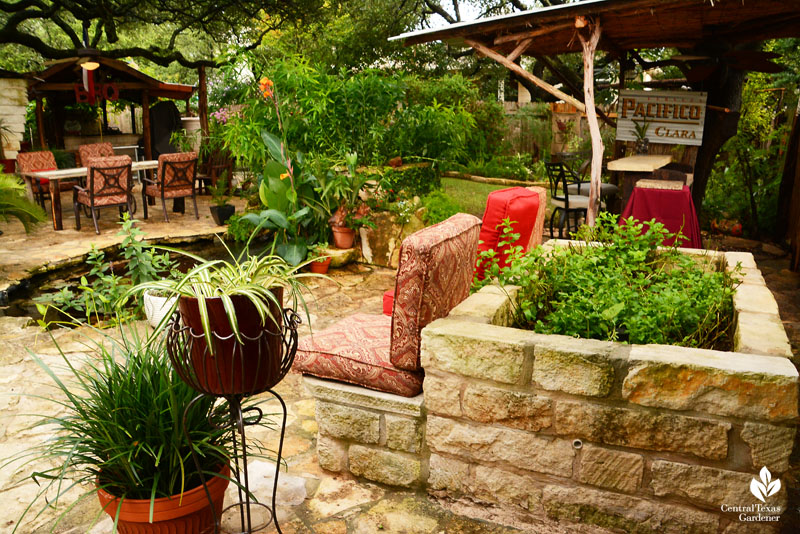
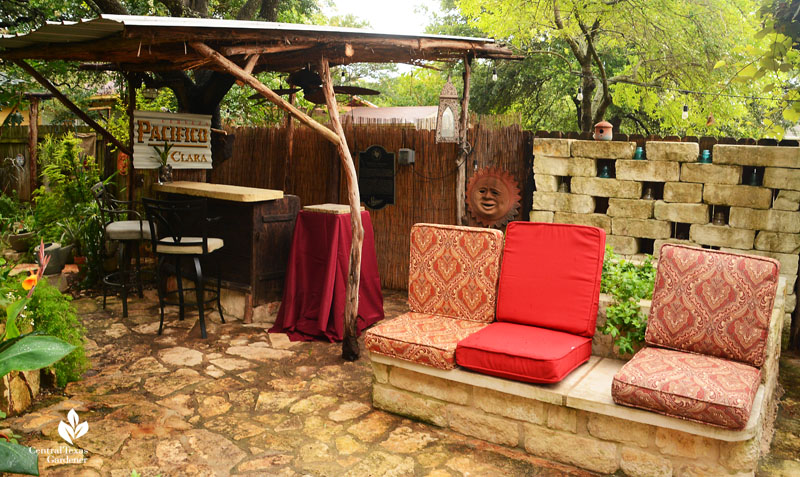
In front, she ripped out the lawn after the drought of 2011. She replaced the concrete walkway with native stone and then swirled in serpentine dimension with red lava rock and white crushed limestone.
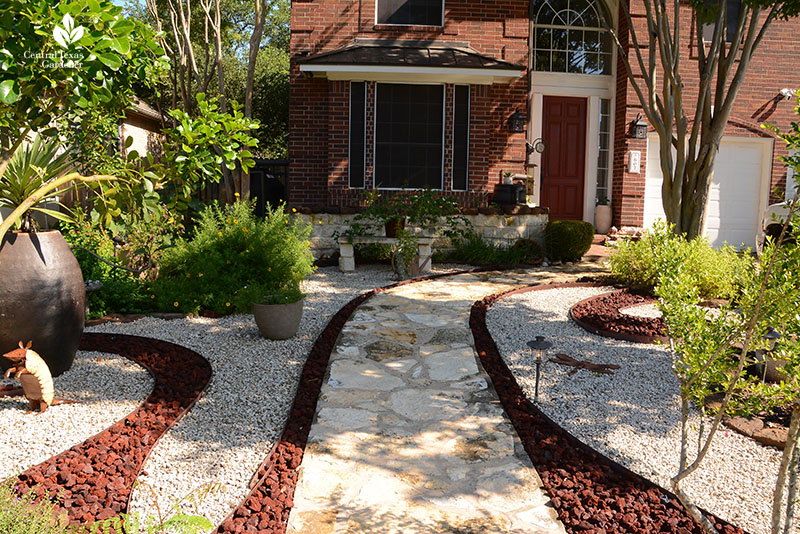
A member of the Native Plant Society, and a Certified Wildlife Habitat and Wildscape, she colored up and texturized with mostly native perennials and grasses to attract wildlife all year long.
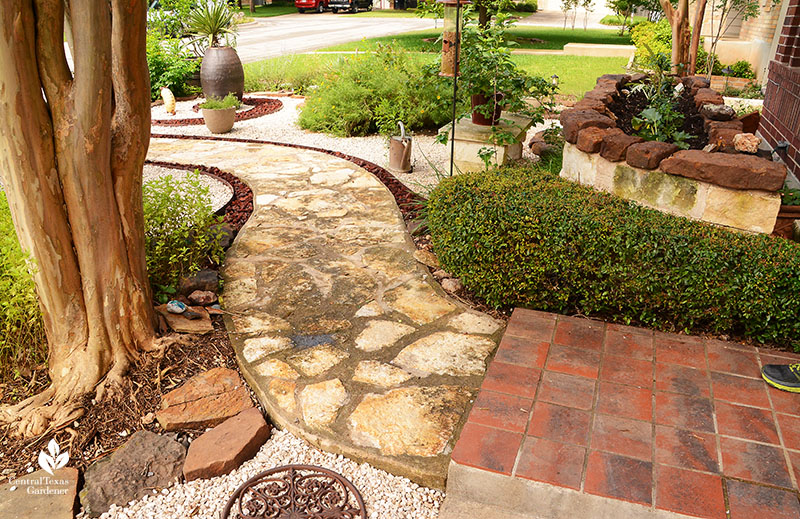
Her mission: to show that you can do something really pretty that’s fun and saves water.
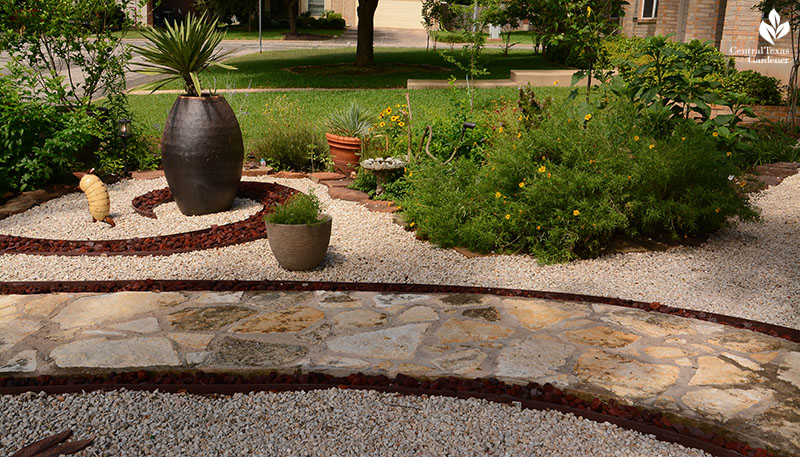
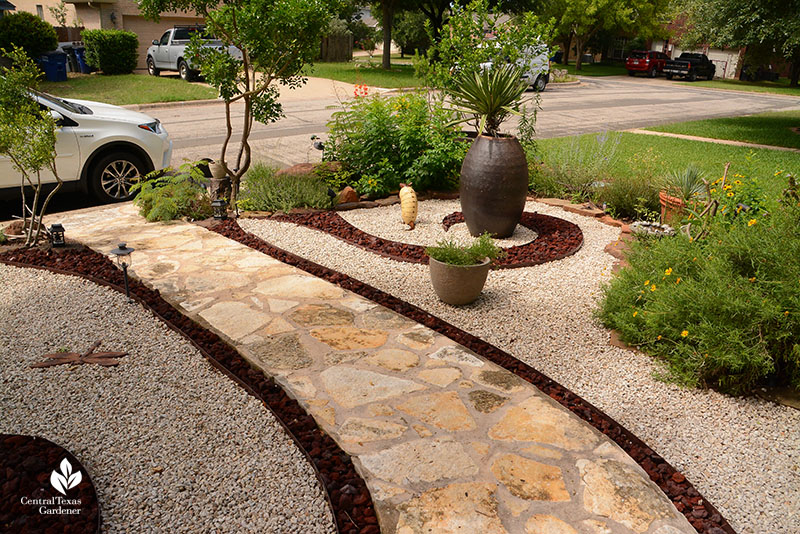
Thanks to rain barrels and a 305-gallon side yard cistern, Betty waters containers and reduces irrigation for perennials.
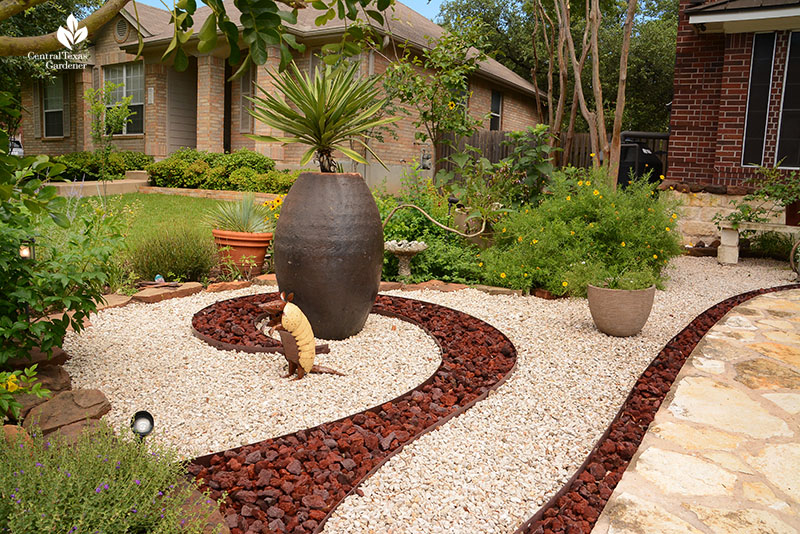
Along with backyard grapes and blackberries, in front a peach tree fills buckets for the family, while the hot driveway curb feeds her mission to keep wildlife around as habitats diminish.
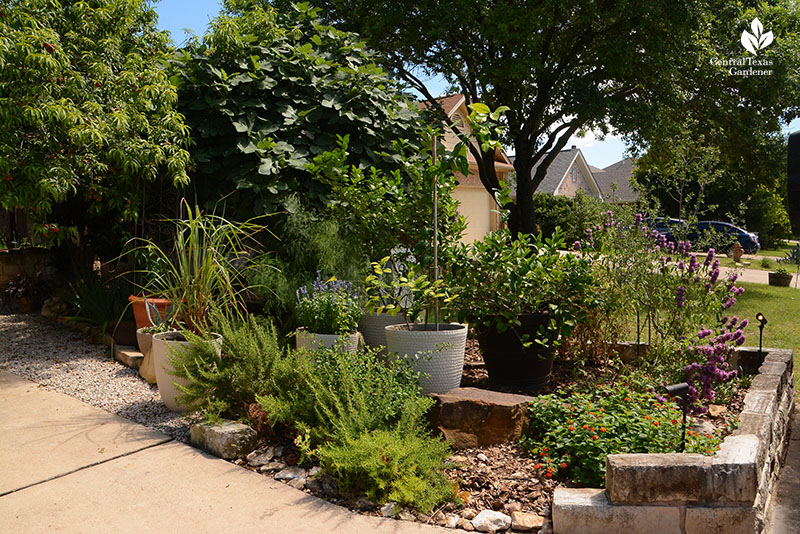
That’s just a quick look! To see it all, watch now.
Thanks for stopping by! Linda

